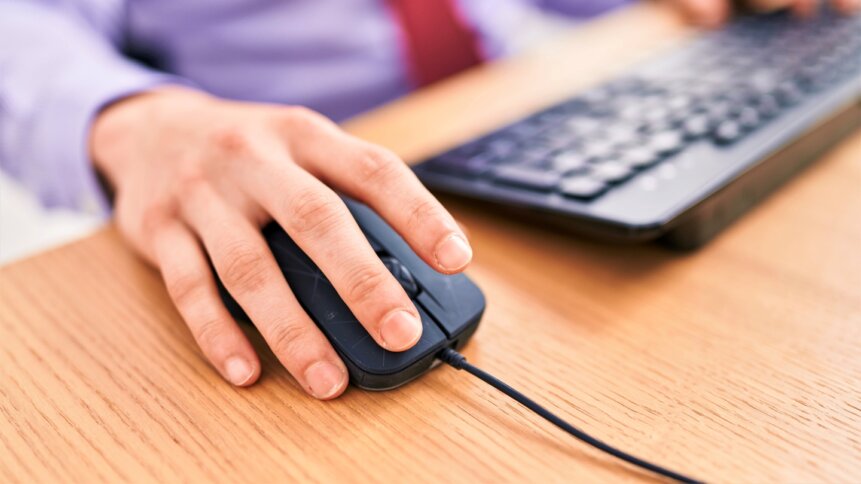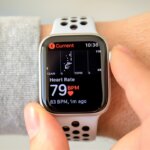
|
Getting your Trinity Audio player ready...
|
Smart devices such as the Apple Watch have helped to popularize the gathering of biometric data, which includes heart rate values and other measurements. Device wearers benefit from insights into their well-being. And data could prompt users to pay more attention to their sleeping habits or help them to maximize their time at the gym. There’s a raft of business applications too, particularly around the use of biometric sensors for stress detection.
iMotions – headquartered in Copenhagen, Denmark – uses electrodermal activity (EDA), also referred to as galvanic skin response, data as part of its human behavior research software. The EDA values, gathered from dermal electrodes, correlate with the activity of the autonomic nervous system. And the data collected can help to quantify emotional state. Film-makers or game developers have the option of using EDA measurements to gauge how scary or joyful a particular scene is. And, based on those results, forecast how their products will land with audiences.
Smart mouse
In the workplace, researchers have investigated the design of a smart computer mouse equipped with biometric sensors for stress detection. To infer respiration and blood pressure information, the device features a photoplethysmography (PPG) sensor placed on the side wall of the mouse. Data is gathered by shining light from an LED into the user’s thumb and monitoring the portion that is reflected, which varies according to the volume of blood under the skin.
Two electrodes located on the top of the smart computer mouse track the operator’s galvanic skin response when their palm is covering the device. Presenting their work at a conference in 2021, the developers note that health disorders related to prolonged exposure to stress are very common among office workers. Biometric data is processed using a microcontroller within the computer mouse and can be transferred over Wi-Fi.
It’s a discrete approach that could catch on thanks to the unobtrusive nature of the design. Office workers are unlikely to volunteer to be wired up to conventional electrodes, which may be uncomfortable and restrict their movement. And so, incorporating biometric sensors for stress detection into a computer mouse is certainly a step in the right direction. But what about employees that don’t use a mouse?
Results presented at the 2020 Conference on Human Factors in Computing Systems – an event sponsored by Facebook, Google, Microsoft, and others, and including contributions from Apple and Autodesk – signpost a potential alternative. Reporting on their findings, engineers at Microsoft showed that it could be possible to use an ‘In- and Over-Ear Biometric Sensing Device’ to detect workers’ stress levels during various tasks.
In-ear options
The wearable kit, which features a 3-D printed frame, records electroencephalogram (EEG) and electrocardiogram (ECG) data and uses the bio-signals as proxies for stress. Extending the study, the team evaluated the merits of using a convolutional neural network to classify stress conditions from biometric data. “A pilot study suggests that a neural network is capable of classifying relaxed and stressed mental states of a user by analyzing two minutes of EEG and ECG signals obtained with the proposed device, with an average accuracy of about 75%,” write the Microsoft researchers.
Formula One drivers wear in-ear accelerometers and have used biometric gloves featuring a tiny, battery-powered chip capable of sensing blood pressure and heart rate since 2017. Gloves can be charged wirelessly and transmit data over a range of 500 m via Bluetooth. The kit is a compulsory element of the FIA’s accident analysis requirements. Transmitted data allows medics to determine a driver’s condition even if they can’t see them – for example, if the cockpit is inaccessible after a crash.
From a stress-testing perspective, palms are one of the richest sites on the human body for gathering the most insightful data. “Our palms tell us a lot about our emotional state, tending to get wet when people are excited or nervous,” comment researchers in the US. Palms reportedly contain the highest density of eccrine sweat glands, which fill up when triggered by psychological stimuli such as mental stress.
Flexible e-tattoo
However, as you can quickly see by turning over your hand and flexing your fingers as if you were squeezing a ball, palm-based electrodes need to conform to a challenging and dynamic geometry. And that complicates things when it comes to coming up with practical, long-lasting electrode designs. But mechanical and computing engineers based in Texas, US, may have solved the issue by deploying what’s dubbed an ‘e-tattoo’.
Made from wafer-thin graphene –a conductive, super-strong form of carbon – the e-tattoo also features serpent-shaped, flexible gold interconnects. The combination, according to its designers, can conform fully to the micro-texture of skin. And this paves the way for great use of galvanic skin response at highly-prized palm locations by biometric sensors for stress detection. Completing the design is a commercial E4 wristband – a popular choice for the real-time acquisition of physiological data.
“It’s so unobstructive that people sometimes forget they had them on, and it also reduces the social stigma of wearing these devices in such prominent places on the body,” said Nanshu Lu, who leads the graphene-based e-tattoo project. It’s clear that developers have a range of options to lean on, depending on the final application. And perhaps one day, motorsports technology could make an unforeseen cross-over to improve the lives of office workers. Watch this space.










